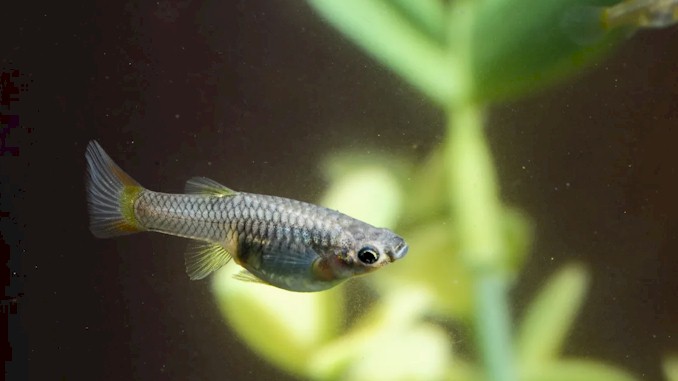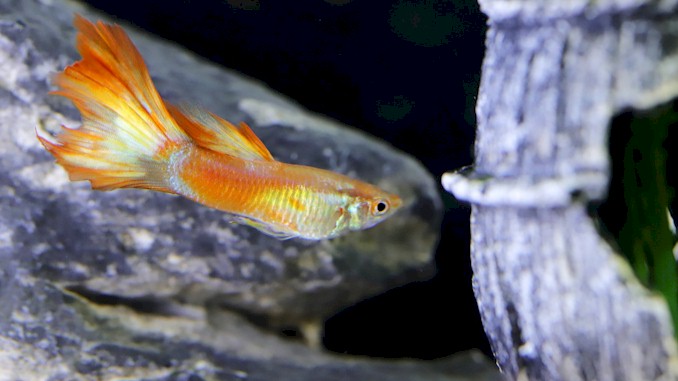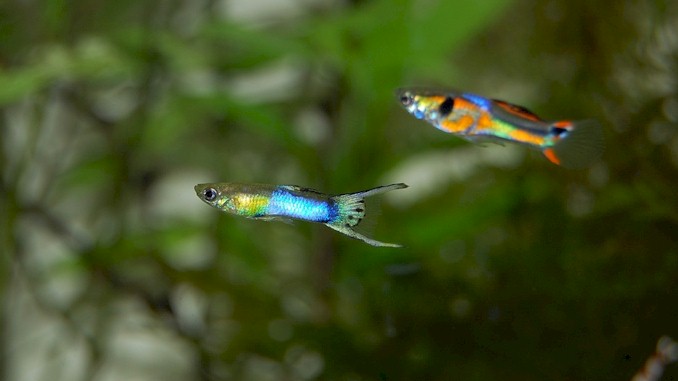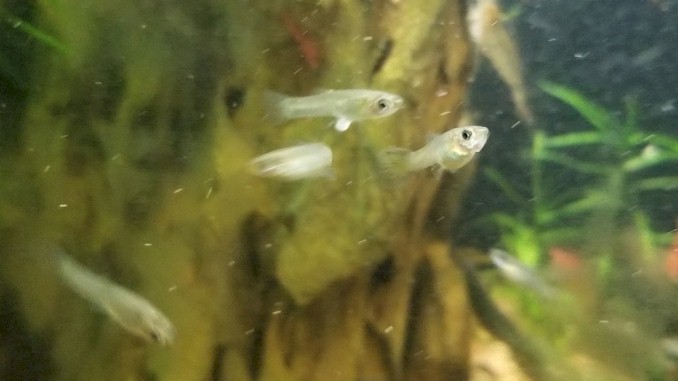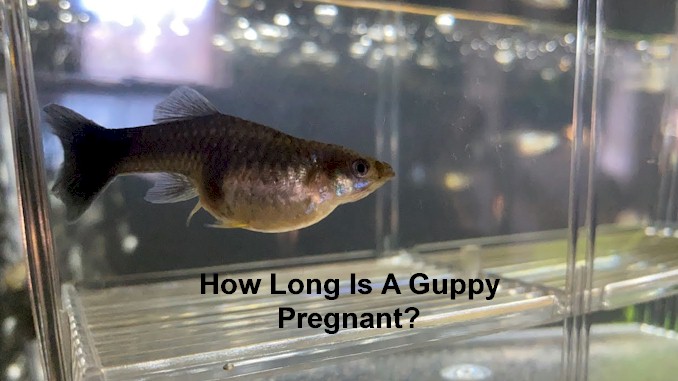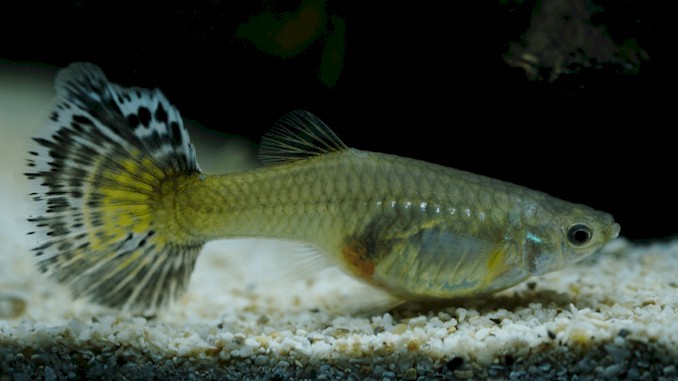Guppy Pregnancy Stages: A Full Guide With Pictures
It’s an exhilarating experience when your female guppy is expecting. However, it’s crucial to provide adequate care to ensure a safe and healthy pregnancy. To achieve this, it’s important to recognize the various stages of guppy pregnancy. You’ve landed in the right spot if you’re a proud owner of a pregnant guppy and wish to learn about the different stages of pregnancy.
During guppy pregnancy, there are three main stages: Fertilization, Gestation, and Parturition. Fertilization occurs when the male guppy releases sperm into the female’s body, fertilizing the eggs. Gestation, which lasts for about 21-30 days, is the period when the embryos develop inside the female’s body. Finally, Parturition is the stage when the female gives birth to live fry. By closely monitoring the physical changes and behaviors of your pregnant guppy, you can easily identify which stage she is in and provide the necessary care to ensure a successful pregnancy.
In this guide, I will provide you with more detailed information on each stage of guppy pregnancy. You will learn about the physical changes that occur in your pregnant guppy, what to feed her during this period, how to prepare for the arrival of the fry, and much more. So, if you want to learn everything you need to know about guppy pregnancy stages, keep reading and let’s dive in!
Fertilization Stage: What You Need to Know
The fertilization stage is the first stage of guppy pregnancy, and it occurs when the male guppy releases sperm into the female’s body, fertilizing the eggs. During this process, it is essential to ensure that the female guppy is receptive to the male’s advances. You can identify a receptive female by observing her behavior. When a female is ready to mate, she will swim near the male, displaying a curved posture, and move her fins rapidly.
Once the female guppy is receptive, the male will attempt to fertilize her by using a specialized anal fin called the gonopodium. The gonopodium is used to transfer sperm into the female’s genital opening. Once the eggs are fertilized, they will travel up to the female’s uterus, where they will develop into embryos.
It is crucial to ensure that the male and female guppies are well-fed and healthy before mating. A healthy diet helps to promote the production of viable sperm and eggs, increasing the chances of successful fertilization. A varied diet of live or frozen foods, such as brine shrimp or bloodworms, is ideal for guppies.
In conclusion, the fertilization stage is an essential part of guppy pregnancy that requires careful observation and attention. By providing your guppies with a healthy diet and monitoring their behavior, you can increase the likelihood of successful fertilization and ensure that your guppies remain healthy throughout their pregnancy. In the next section, we will cover the gestation stage of guppy pregnancy, where the embryos develop inside the female’s body.
Gestation Stage: Physical Changes and Care
The gestation stage of guppy pregnancy is the period when the embryos develop inside the female’s body, which typically lasts for about 21-30 days. During this stage, it is essential to provide your pregnant guppy with proper care and attention to ensure a healthy pregnancy and reduce the risk of complications. Here are some physical changes to look out for and tips on how to care for your pregnant guppy during the gestation stage.
Physical Changes
- Swollen belly: As the embryos grow, the female guppy’s belly will gradually become more prominent.
- Dark gravid spot: The gravid spot, located near the anus, will become darker as the pregnancy progresses.
- Changes in appetite: Pregnant guppies may eat less, or they may become more ravenous than usual.
- Restlessness: Pregnant guppies may become more active or display erratic behavior.
Here is a picture of a pregnant guppy in gestation stage:
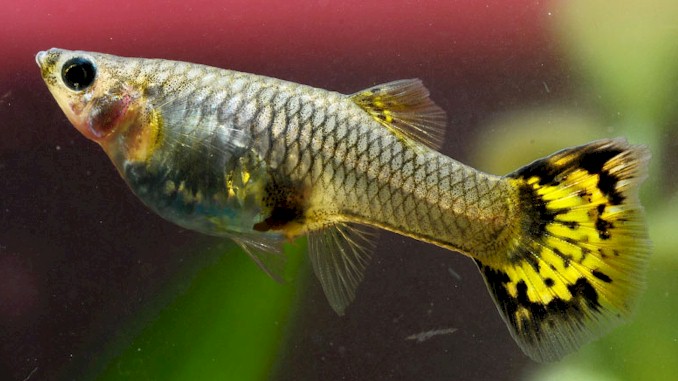
Care
- Monitor water parameters: Ensure that the water temperature, pH, and ammonia levels are optimal for your guppy’s health.
- Provide a comfortable environment: Pregnant guppies may require more hiding spots or plants to provide a sense of security.
- Feed a balanced diet: Provide your pregnant guppy with a varied and nutritious diet, rich in protein, to support embryo development.
- Avoid overfeeding: Overfeeding can cause health issues and pollute the water, leading to complications during pregnancy.
- Avoid stress: Keep other fish or aggressive tankmates away from your pregnant guppy to reduce stress and prevent any harm to the developing embryos.
By providing your pregnant guppy with proper care and attention during the gestation stage, you can ensure a healthy pregnancy and increase the likelihood of successful embryo development. In the next section, we will cover the final stage of guppy pregnancy, which is the parturition stage when the female guppy gives birth to live fry.
Identifying the Final Stage of Pregnancy: Parturition
The parturition stage of guppy pregnancy is when the female guppy gives birth to live fry. This stage typically lasts for a few hours, during which the female will display various behaviors indicating that she is about to give birth. Here are some signs to look out for and tips on how to care for your guppies during the parturition stage.
Signs of Labor
- Restlessness: The female guppy may become more active and swim erratically around the tank.
- Separation: The female guppy may isolate herself from other fish or seek out a quiet place to give birth.
- Swollen belly: The female’s belly may appear larger, and you may notice a bulge near the anal fin.
- Distended anus: The female’s anus may become more prominent, and you may see a slight protrusion of the fry’s head.
- Visible contractions: The female may display visible contractions, which can last for several seconds.
Care
- Provide a separate tank or breeding trap: To prevent the fry from being eaten by other fish, provide a separate tank or breeding trap for the female to give birth in.
- Remove the female after birth: Once the female has given birth, remove her from the tank to prevent her from eating the fry.
- Feed the fry: Once the fry are born, provide them with a balanced diet of small, frequent meals, such as crushed flakes or brine shrimp.
- Monitor water parameters: Ensure that the water temperature, pH, and ammonia levels are optimal for the fry’s health.
- Provide hiding spots: Provide the fry with plenty of hiding spots, such as plants or decorations, to reduce stress and increase their chances of survival.
In conclusion, understanding the different stages of guppy pregnancy is essential for providing proper care and ensuring a successful pregnancy. By identifying the fertilization, gestation, and parturition stages, you can provide your pregnant guppy with the care she needs and increase the likelihood of healthy embryo development and live fry.
What to Feed Your Pregnant Guppy
Feeding your pregnant guppy the right diet is crucial to ensure proper embryo development and a healthy pregnancy. Here are some tips on what to feed your pregnant guppy.
- High-quality flakes or pellets: High-quality flakes or pellets should make up the bulk of your pregnant guppy’s diet. Look for fish food specifically designed for pregnant fish, as they typically contain higher levels of protein and other essential nutrients.
- Live or frozen foods: Live or frozen foods, such as brine shrimp, bloodworms, or daphnia, can be offered as a supplement to your guppy’s diet. These foods are high in protein and help to provide essential nutrients that your guppy needs during pregnancy.
- Vegetables: Offering your guppy small amounts of blanched vegetables, such as spinach or zucchini, can provide a source of fiber and essential vitamins. These should be given in small quantities and removed if not eaten within a few hours.
- Frequent small meals: During pregnancy, your guppy’s appetite may increase, and it’s important to provide small, frequent meals throughout the day rather than one large meal. This helps to ensure that your guppy gets the nutrients she needs and reduces the risk of overfeeding.
- Avoid overfeeding: Overfeeding can lead to obesity and other health issues, so it’s important to monitor the amount of food your pregnant guppy is consuming. Feed only what can be consumed within a few minutes and remove any excess food.
In conclusion, feeding your pregnant guppy a balanced and varied diet is essential for proper embryo development and a healthy pregnancy. By providing high-quality flakes or pellets, live or frozen foods, vegetables, frequent small meals, and avoiding overfeeding, you can help to ensure a successful pregnancy and healthy offspring.
Preparing for the Arrival of the Fry: A Step-by-Step Guide
Congratulations, your pregnant guppy is about to give birth! Here’s what you need to do to prepare for the arrival of the fry.
- Separate the pregnant guppy: As the due date approaches, it’s important to separate the pregnant guppy from the rest of the tank. You can do this by placing her in a breeding box or a separate tank.
- Provide hiding places: Once the fry are born, they will need hiding places to avoid being eaten by the adult fish. Provide plenty of hiding places, such as live plants, aquarium decorations, or breeding traps.
- Prepare a fry tank: Prepare a separate tank for the fry. It should be small, shallow, and have a sponge filter to prevent the fry from being sucked in. Add a heater to maintain a temperature of around 78-80°F (26-27°C).
- Condition the water: Condition the water in the fry tank by adding a dechlorinator and beneficial bacteria. Test the water regularly and perform water changes as needed to maintain good water quality.
- Feed the fry: Feed the fry small amounts of food several times a day. Start with infusoria or liquid fry food, then move on to baby brine shrimp or powdered fish food as they grow.
- Monitor the fry: Monitor the fry closely for any signs of illness or stress. Remove any dead or sick fry and perform water changes as needed.
By following these steps, you can prepare for the arrival of the fry and give them the best chance of survival. Remember to be patient and keep a close eye on the fry as they grow and develop. Good luck!

